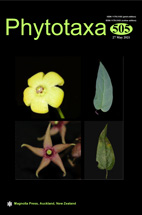Abstract
Samples for isolation of dictyostelid cellular slime molds were obtained from 20 collecting sites at 18 localities in south central and southeastern Madagascar during May 2009. At least thirty species of dictyostelids representing seven genera were recovered from 52 samples of soil/humus. This total included 17 species described as new to science, 13 species already known from various localities throughout the world, and four isolates that remain unidentified. Fourteen of the new species isolated from these samples are members of the whorl-branched, light-spored genus Heterostelium (formerly Polysphondylium). The overall level of species richness of dictyostelids in Madagascar is greater than what is known for all of mainland Africa sampled to date. Levels of biodiversity in Madagascar were higher for mesic than for xeric vegetation types, and each of the newly described species of Heterostelium appeared to have a limited distribution among the localities sampled.

